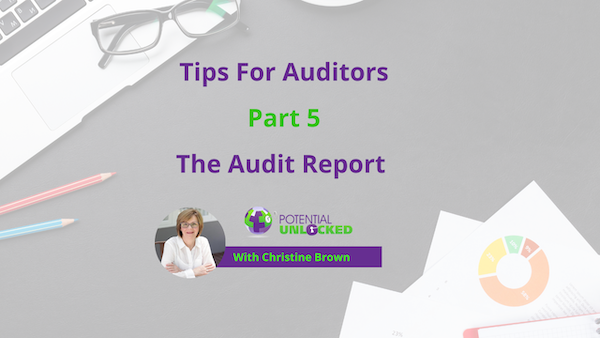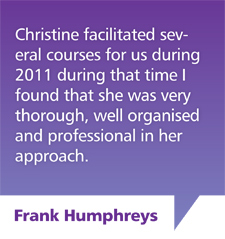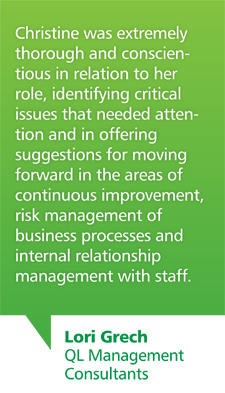How to Ensure a Smooth Audit – Perth Professional Auditor Coach Explains
Part 5 - The Audit Report

Working in the area of improvement and engagement for many years has taught me a lot. And, while the end result of an audit depends on many moving parts, having the full knowledge of the process and best practices will likely create a positive outcome.
In previous blogs we looked at the crucial steps of planning an audit, the importance of interpersonal skills and how to handle potential conflicts during audits.
Now that we have covered those topics, it’s time to focus on the end result – the audit report.
The audit report is everything the auditor has been working on during the engagement. It’s the report that will be handed over to management, so they are able to implement any recommendations.
The audit report will include all the findings and recommended actions (remove as we are not allowed to do this). It is strongly recommended that the report is done as soon as possible and at least a draft within the first 24 hours. Otherwise, an auditor will risk losing valuable information that was collected during the audit.
This takes us back to the importance of note taking. An auditor must be sure to document everything (not necessary for ISO audits) key information during an audit and capture all the crucial details.
The Audit Report
If an auditor does not have a specific audit template to work with, they will need to develop one. There are a number of key details that would need to be included in the report. This includes the dates, the audit location and the areas / processes within the business that were audited. The report will also include audit objective/s and the people that were audited.
Once the general information is taking care of, the ‘meat part’ of the report will include the evidence of the work, including what the auditor saw and in general, all the findings.
Writing the report
When writing an audit report, it is crucial to always ask who is reading the report. In other words, who is the end user? It is also important to ask the person who will be receiving and reading the report, what would they like to see and if they have any requirements.
These days, as everything is used electronically, putting a report together is a little easier but whatever the format and structure of the report may be, the auditor needs to make sure that the person receiving the report gets value from it.
Once the auditees see value from the report, they will not only appreciate the time spent on it but will encourage future audits that will improve the business processes.
Writing an audit report can be a little frightening, especially if this is the first one an auditor is writing. A good starting point is to find any report that was written inside the auditor’s organisation for some guidance.
That said, there are good reports and bad reports, and an auditor should make sure to look at a few to get a better understanding of which one to use.
Another crucial point to keep in mind is categorising the findings. Typically, an audit would include an executive summary for an overview of how the audit went. In the body of the report, against each process the auditor should also categorise opportunities for improvement and best practices, if any.
Using this structure will be a lot more valuable for the auditees, rather than them trying to read an essay.
Finally, it’s important to say that as auditors we all need to start somewhere. The more audits one does, the better they will get, so it is crucial to keep developing and learning along the way. And follow the guidance of others in your organisation.
If you are an auditor looking for more advice or guidance or, if you are an auditee looking at best practices such as preparing for audits, feel free to reach out to Christine at Potential Unlocked.
Looking forward to hearing from you.










